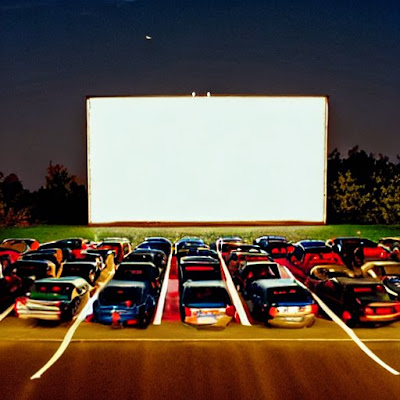Drive-in theatres, also known as drive-ins, are outdoor cinema venues where moviegoers can watch films from the comfort of their cars. The origins of drive-in theatres can be traced back to the early 20th century. The first patented drive-in theatre was opened on June 6, 1933, by Richard M. Hollingshead Jr. in Camden, New Jersey, United States. The theatre was named "Drive-In Theatre" and featured a 40-foot by 50-foot screen and space for 400 cars.
Hollingshead's motivation for creating the drive-in theatre was to provide a convenient and family-friendly movie-watching experience. His concept was influenced by several factors, including his mother's inability to fit comfortably in traditional theatre seats and his personal love for automobiles. The drive-in theatre offered a novel way for people to enjoy movies while staying in their cars, which was particularly appealing to families with young children.
The popularity of drive-in theatres grew steadily, and they reached their peak during the 1950s and 1960s when there were around 4,000 drive-ins in operation across the United States. They became an integral part of American culture, offering a unique social experience where families and friends could gather, enjoy movies, and have snacks from concession stands without the constraints of indoor theatres.
However, with the advent of multiplex cinemas and the rising popularity of home video in the 1970s and 1980s, drive-ins faced a decline. Many drive-ins closed down, and the number of operating theatres dropped significantly. The transition from film to digital projection in the 2000s also posed a financial challenge for smaller drive-ins that couldn't afford the expensive equipment upgrades.
Despite the decline, there has been a recent resurgence of interest in drive-ins, especially in response to the COVID-19 pandemic. Drive-ins offer a socially distanced entertainment option, allowing people to enjoy movies while minimizing the risk of virus transmission. Many temporary drive-ins were set up in parking lots and open spaces, and some traditional drive-ins that survived continue to operate.
Today, while the number of operating drive-in theatres is significantly lower than its peak, there are still numerous drive-ins around the world, particularly in the United States. These theatres often offer a nostalgic movie-watching experience, complete with large outdoor screens, speakers mounted on poles or car radios tuned to specific frequencies for audio, and concession stands serving snacks and refreshments.
It's worth noting that the availability and operation of drive-in theatres can vary depending on the region and local demand for this type of entertainment.
Source: Some or all of the content was generated using an AI language model


No comments:
Post a Comment